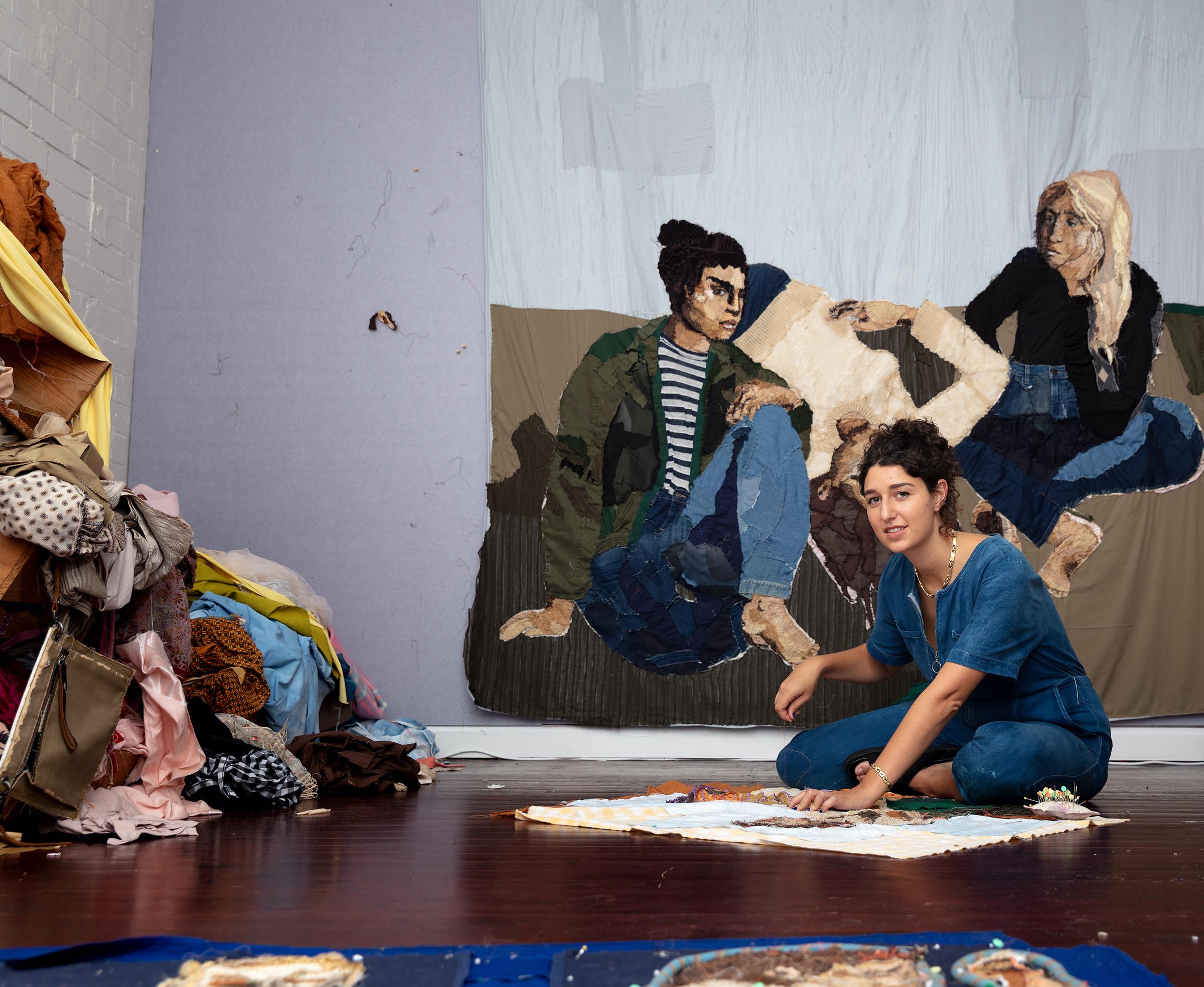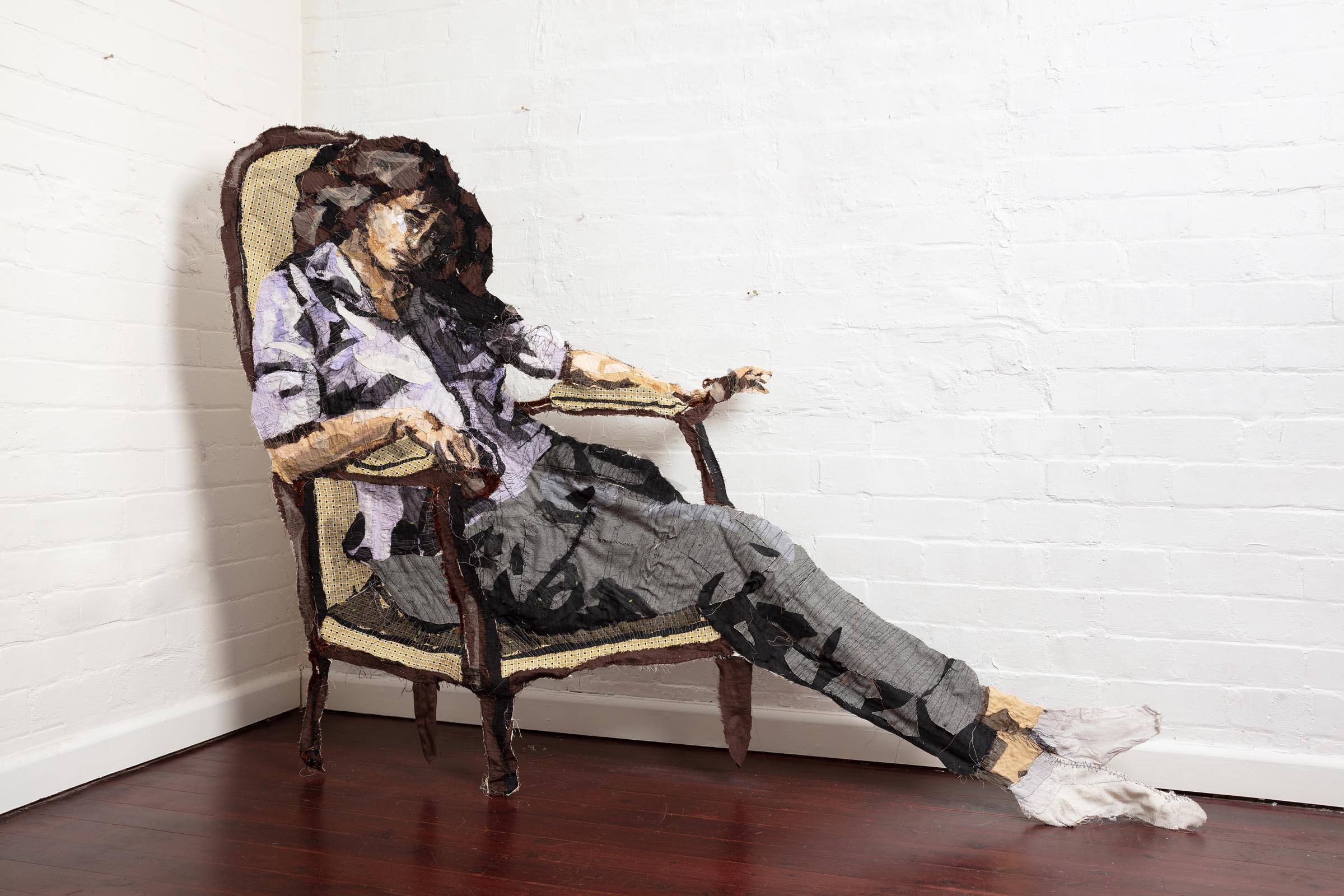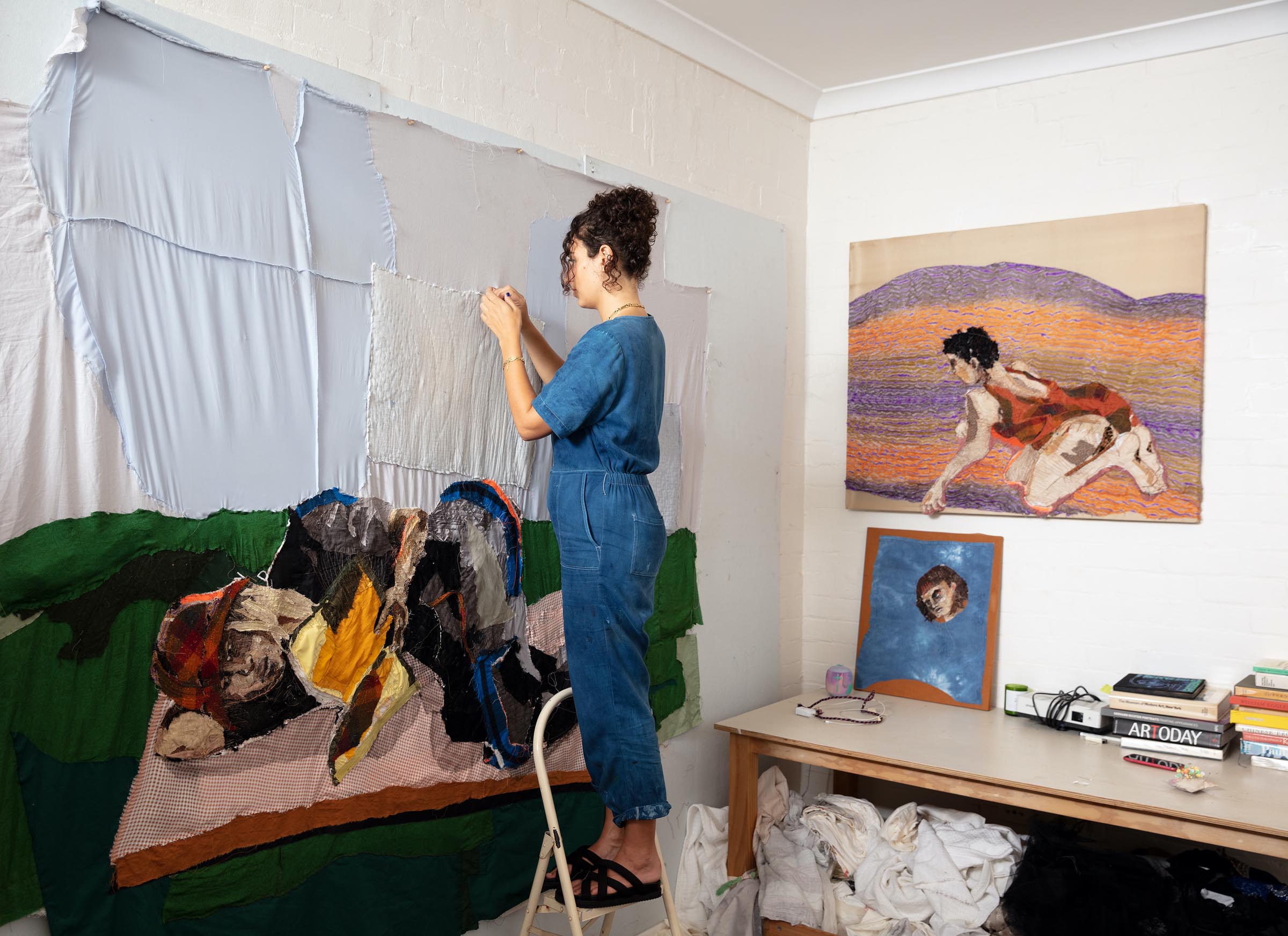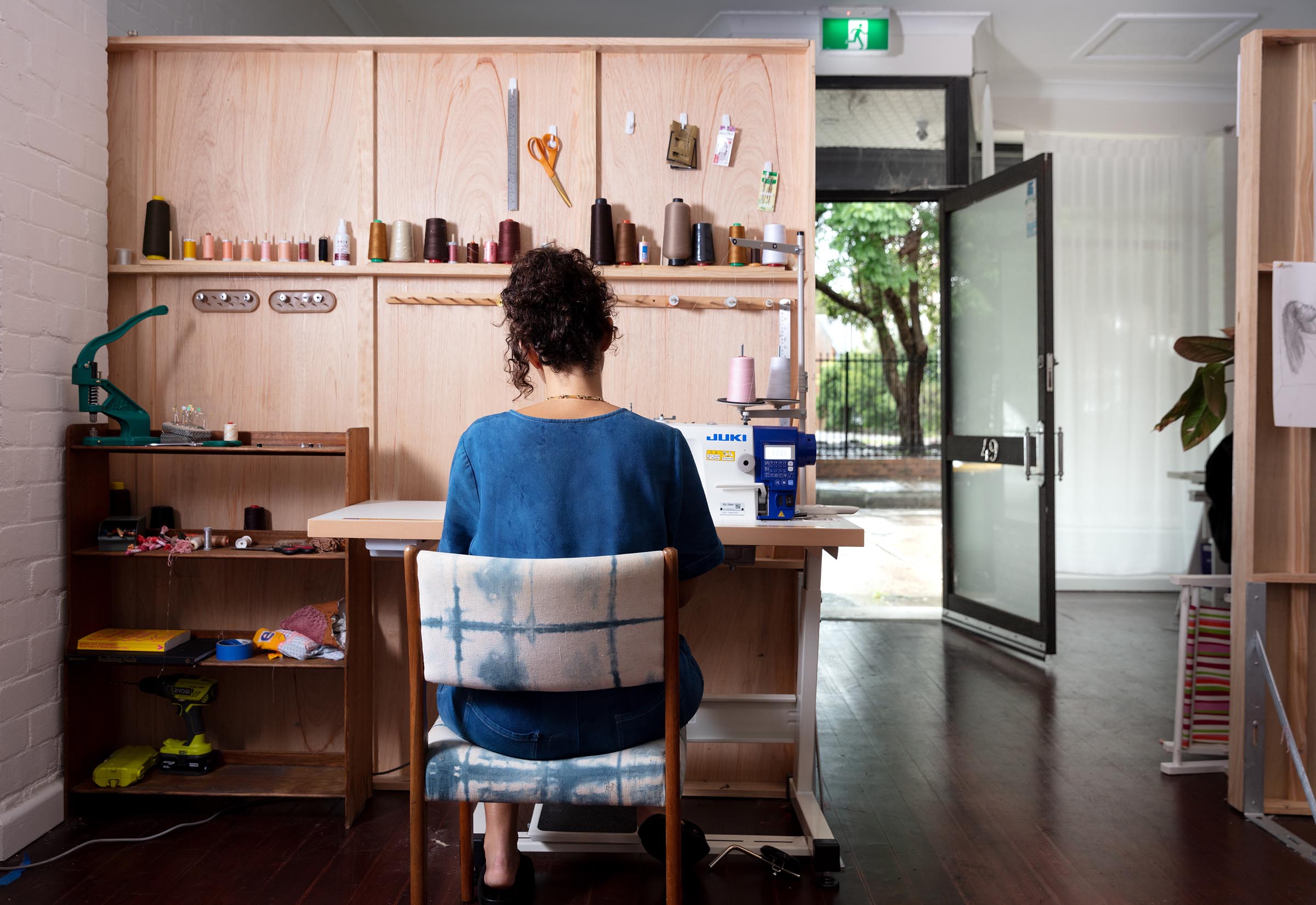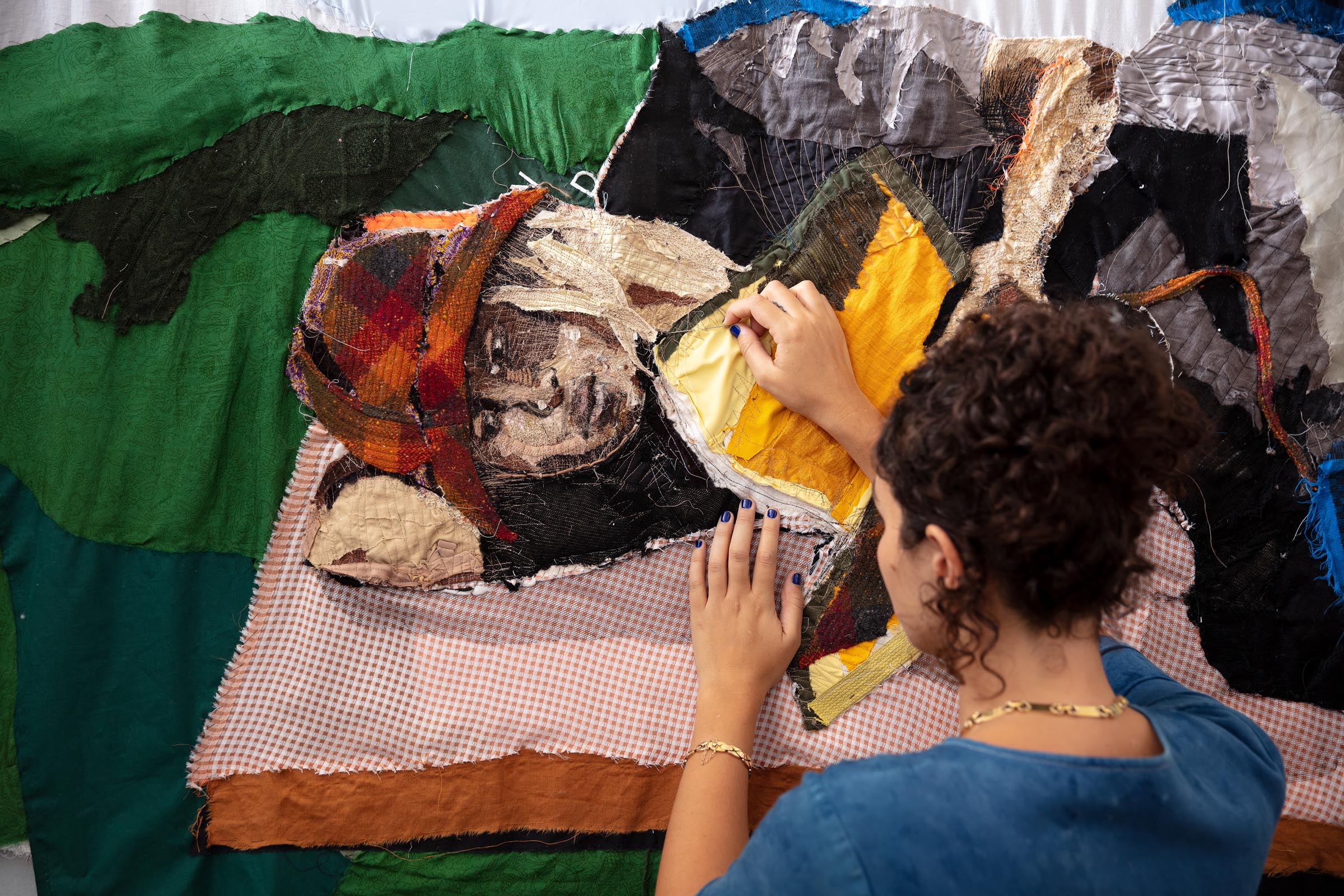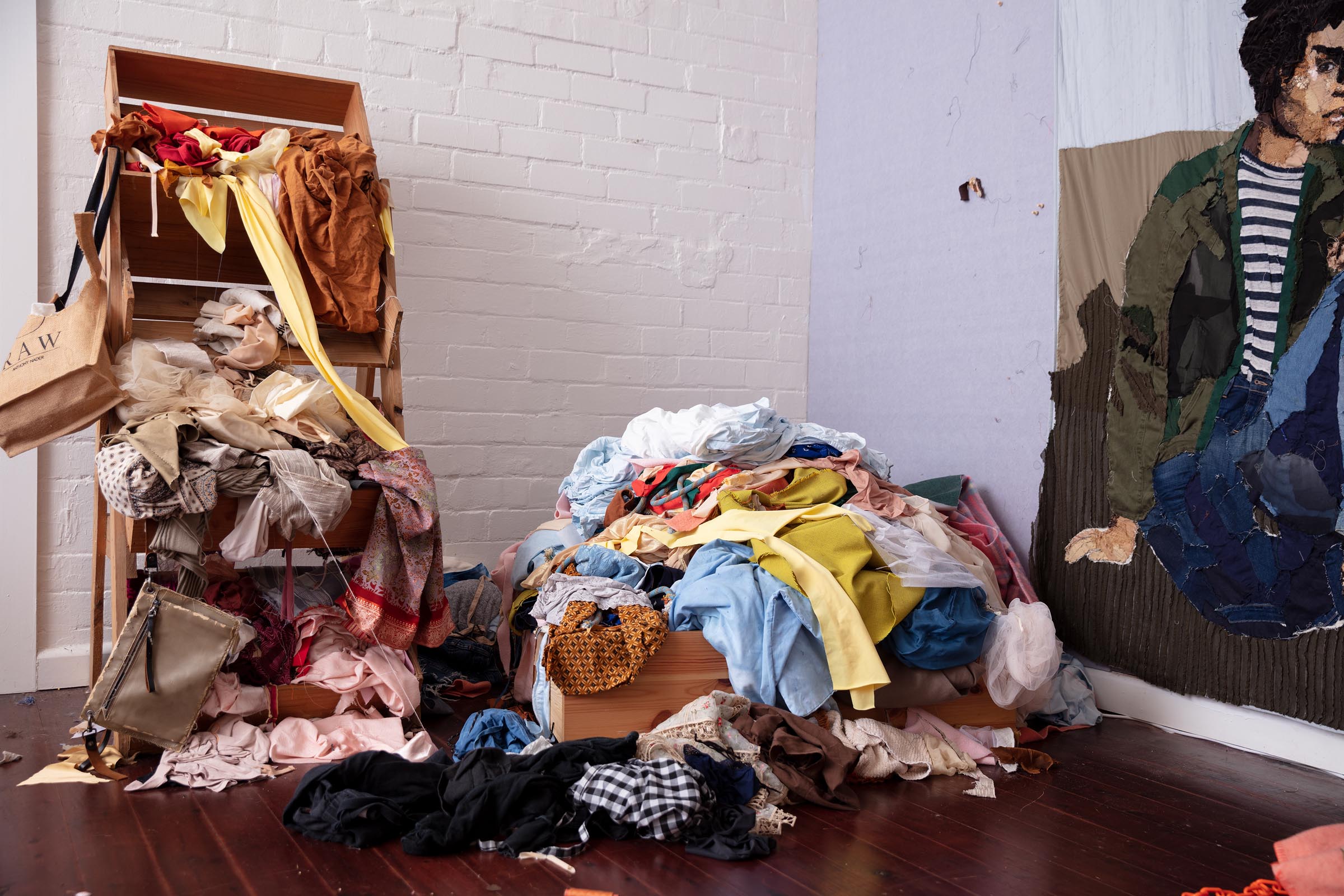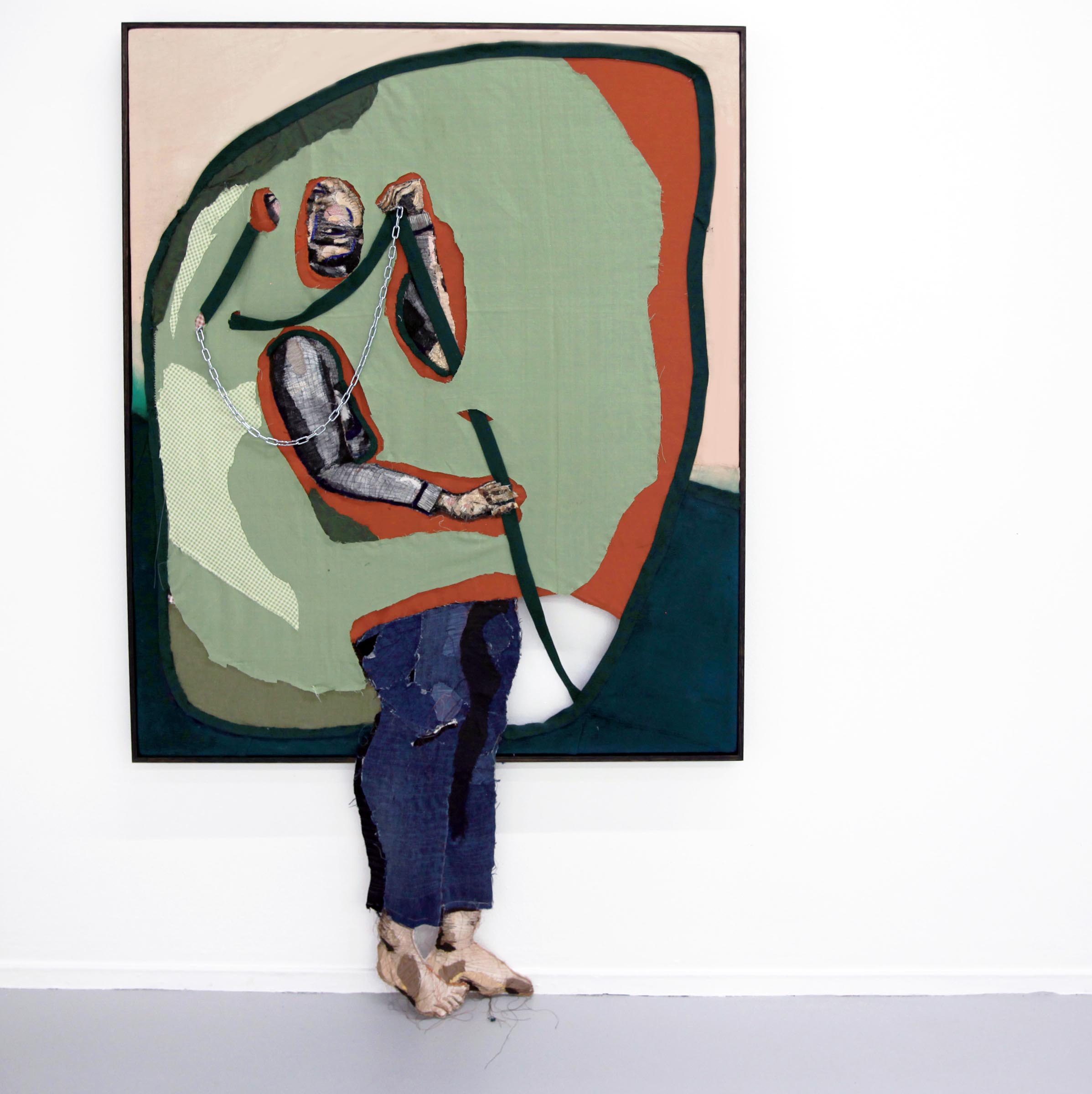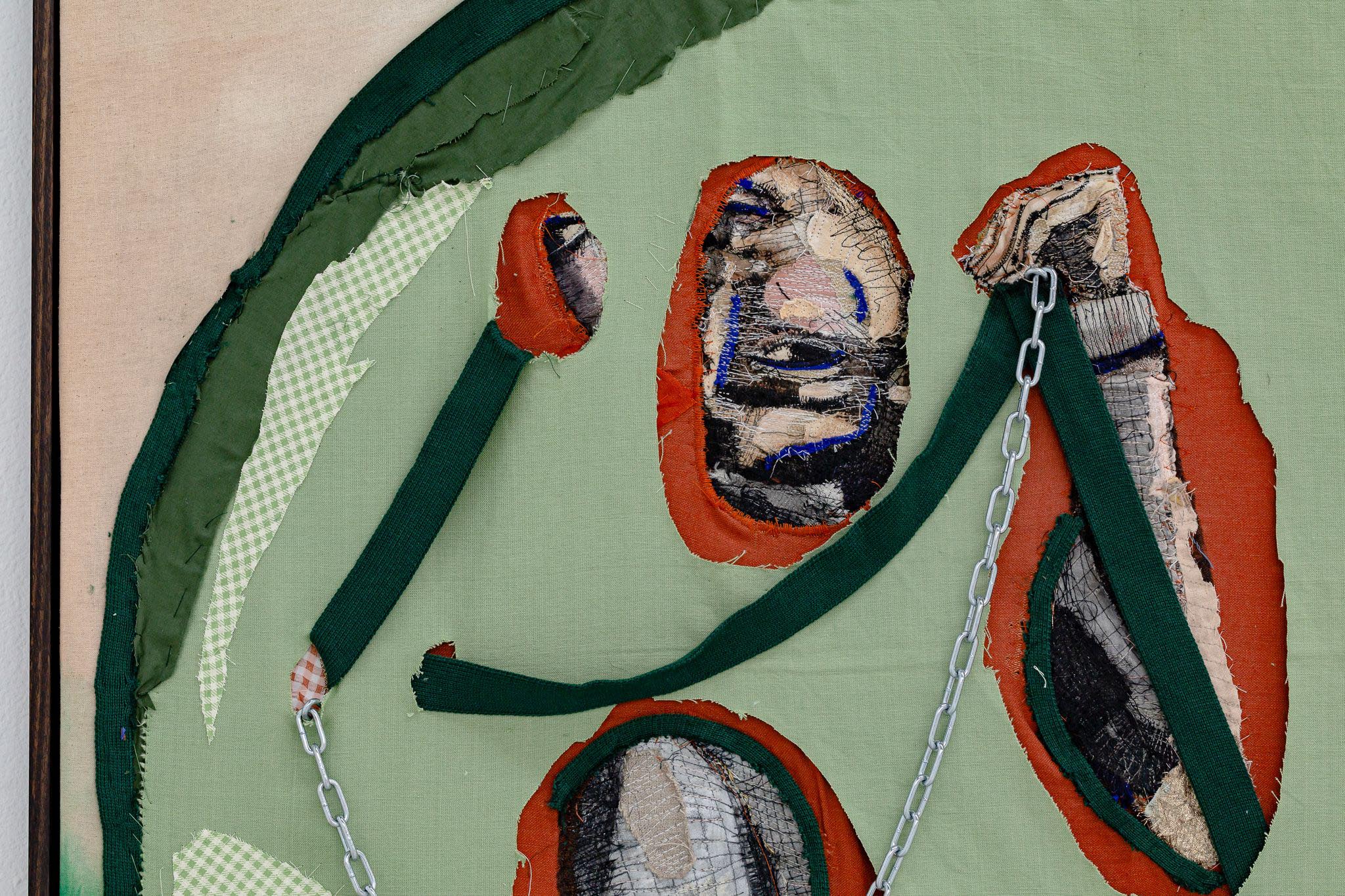How did you get into making art?
I was lucky to grow up in a creative house. When I was a kid, my mum and I used to drive around to local construction sites looking for wooden palettes. She was using them as bases for these sort of sculptural woven paintings. We would load up her 4wd after dark, bring them home and spray-paint them in our front yard.
I can’t remember a time when I wasn’t making something. I think most kids start that way. It seems that for those lucky enough, Art School can give liscense to call this ‘work’ and the language to justify it, but the impulse lies latent in most adults.
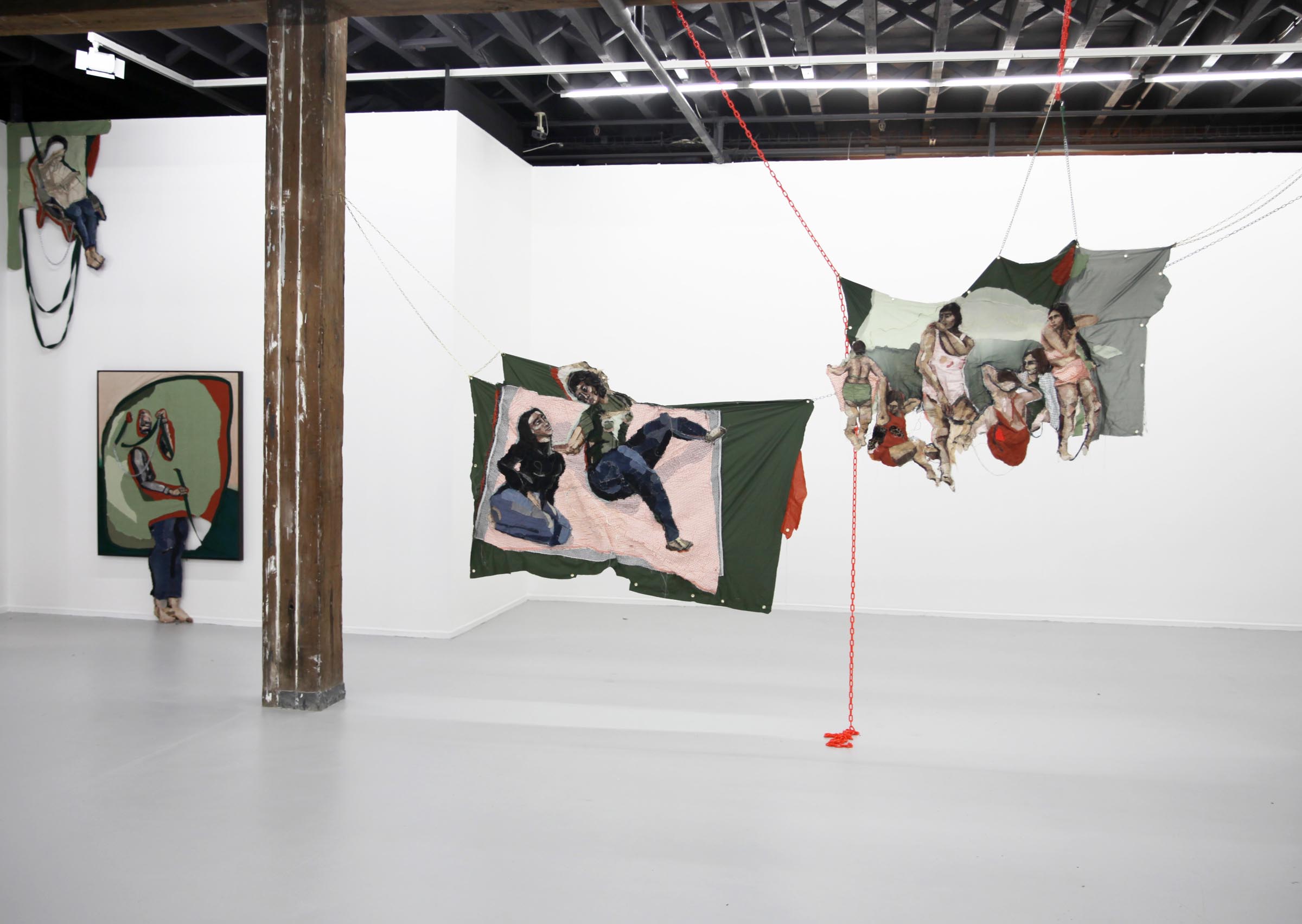
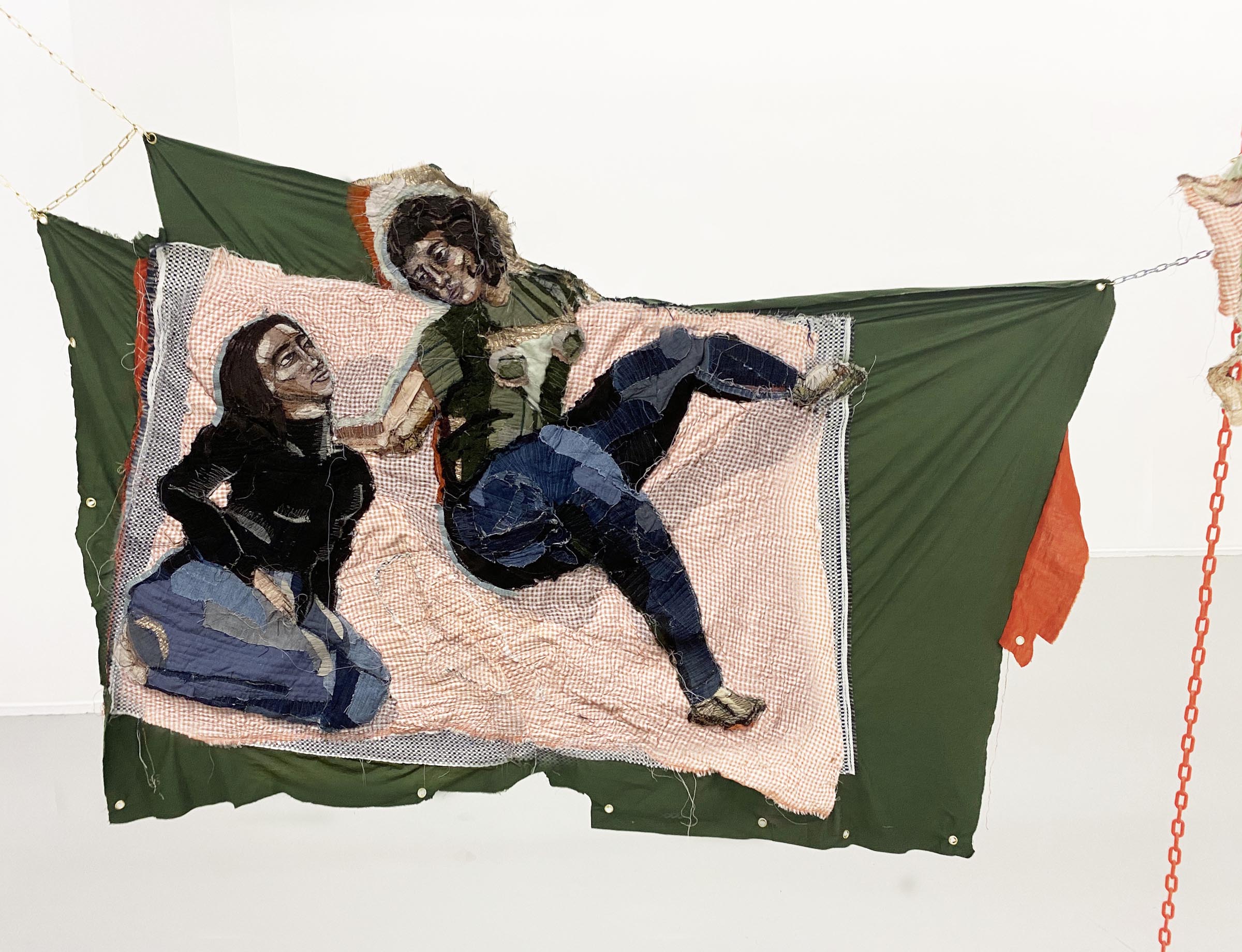
What are you currently working on?
I’ve got my first solo coming up in July so I’m very focused on that at the moment. It’s titled ‘Muses,’ and focuses on re-visioning the Muse as an active rather than a passive force. Muses are a unique metaphor for the enigmatic nature of artistic production, the way that art can seem to come through you, alchemically transforming from a notion to a tangible thing. I’m interested in the ‘muse’ both as mythological figure and as person, typically a woman, who inspires creative work.
As a practice, embroidery, until very recently, has been denied space in the Western canon despite its expressive and subversive power. Unlike painting, a form of image making relished for its criticality and poetry, needlework was seen as an amusement for ladies. The word ‘Amuse’ originates from the Greek amousos, or “without Muses,” meaning “uneducated.”
This body of work focuses on ‘finding the muses’ in a place they have been told they don’t belong, exploring their mythological origins, giving space to my friends, my muses, to decide how they want to be represented, and engaging with the women who inspired the work of countless generations of men.
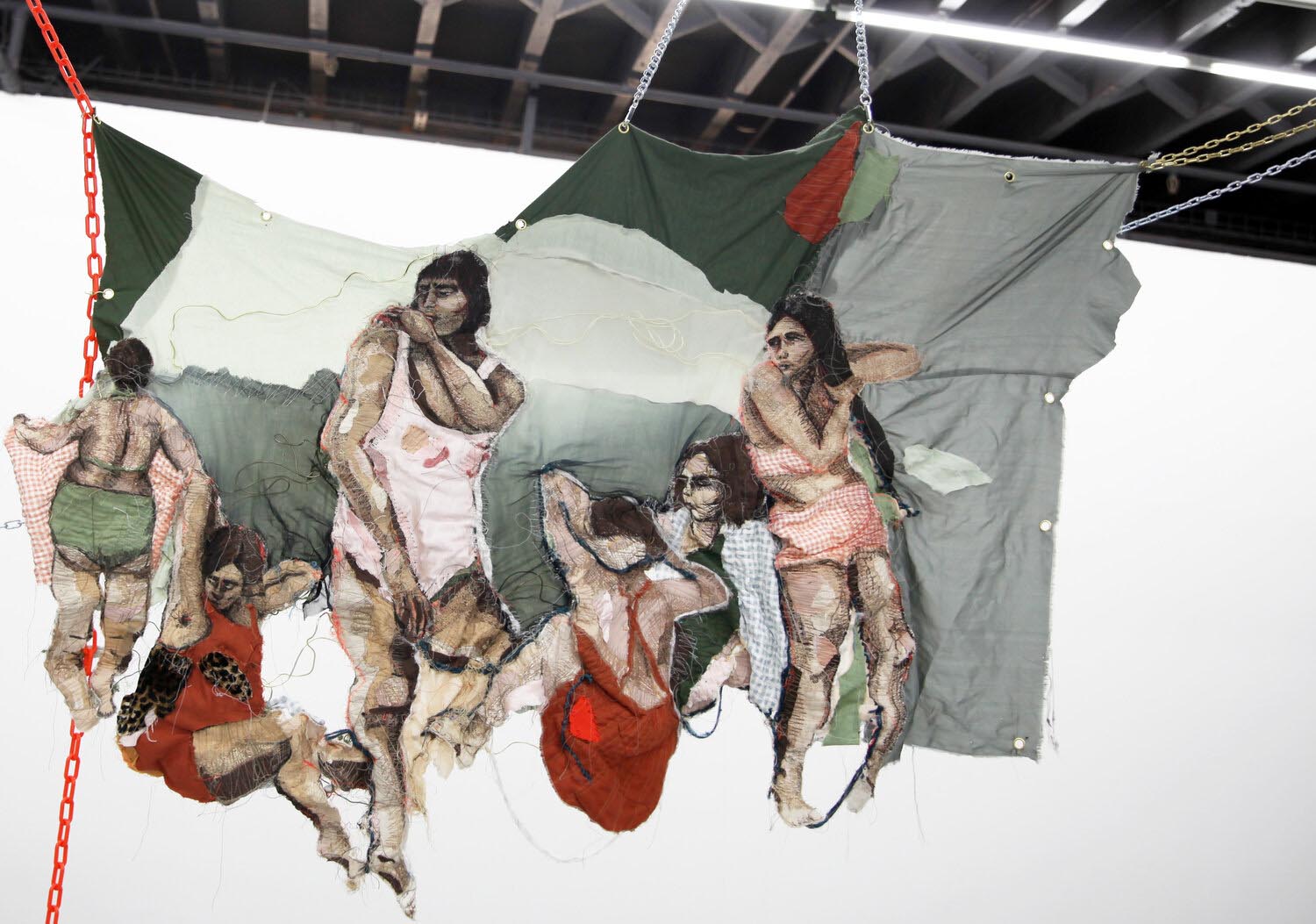
I’m interested in the ‘muse’ both as mythological figure and as person, typically a woman, who inspires creative work.
Julia Gutman
What inspired you to get started on this body of work?
I’ve been working with textiles, portriature and appropriation for the past two years. In many ways, it’s a diary of my daily life and intimate relationships, of what I’m looking at and reading.
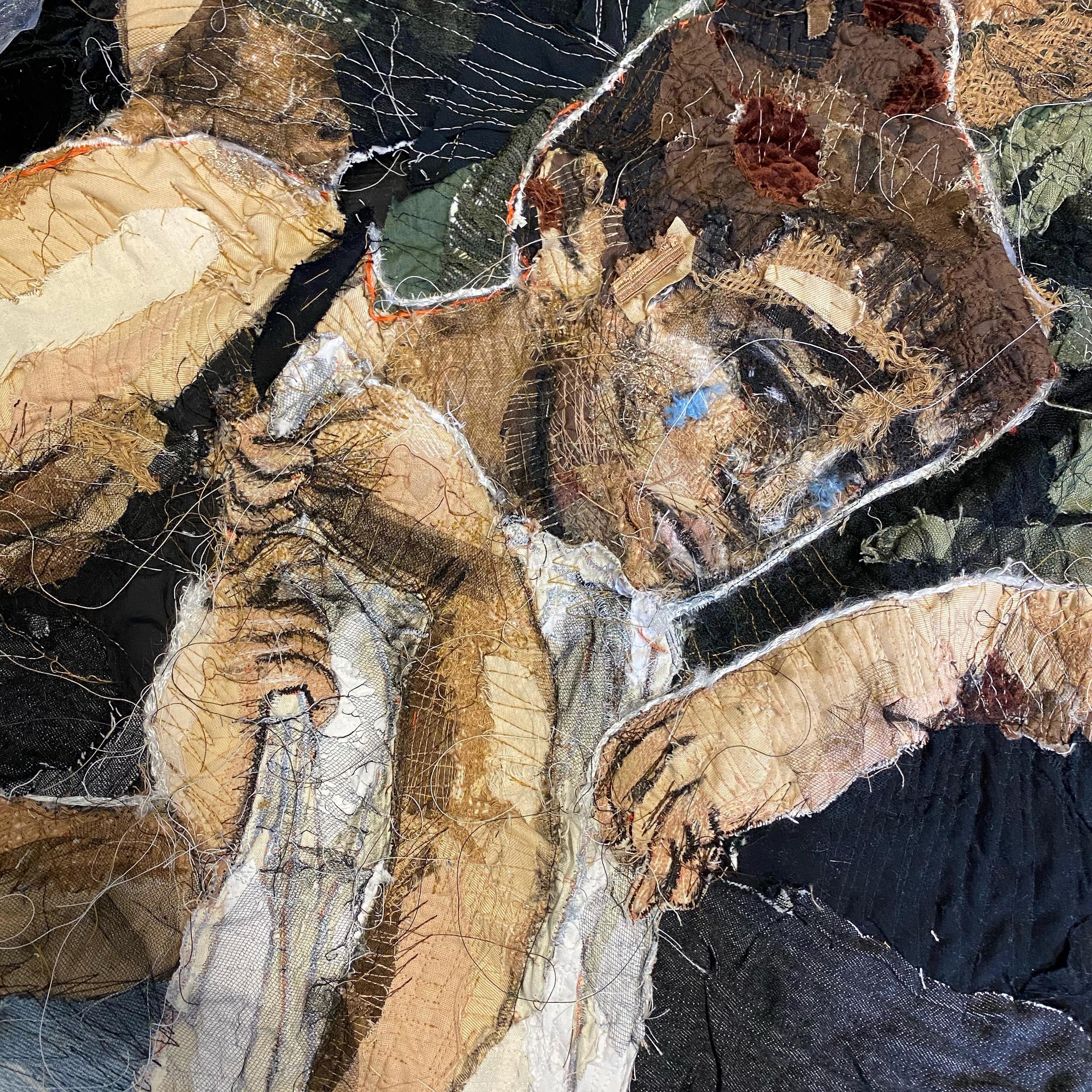
Do you work on distinct projects or do you take a broader approach to your practice?
Art-making, for me, is not really about the production of distinct objects, but a general approach to life: it’s about how the thinking and reading and labor involved in producing those objects helps me become a more present, connected and open person. Intuition, playfulness and curiosity are the core values I’m trying to cultivate.
I love this quote from Ann Hamilton:
“Our culture has always beheld with suspicion unproductive time, things not utilitarian, and daydreaming in general, but we live in a time when it is especially challenging to articulate the importance of experiences that don’t produce anything obvious, aren’t easily quantifiable, resist measurement, aren’t easily named, are categorically in-between….
Every act of making matters. How we make matters. I like to remember, and remark with regularity, that the word “making” occupies seventeen pages in the Oxford English Dictionary, so there are multiple possibilities for a lifetime of making: make a cup, a conversation, a, building, an institution; make memory, make peace, make a poem, a song, a drawing, a play; make a metaphor that changes, enlarges, or inverts the way we understand or see something. Make something to change your mind”
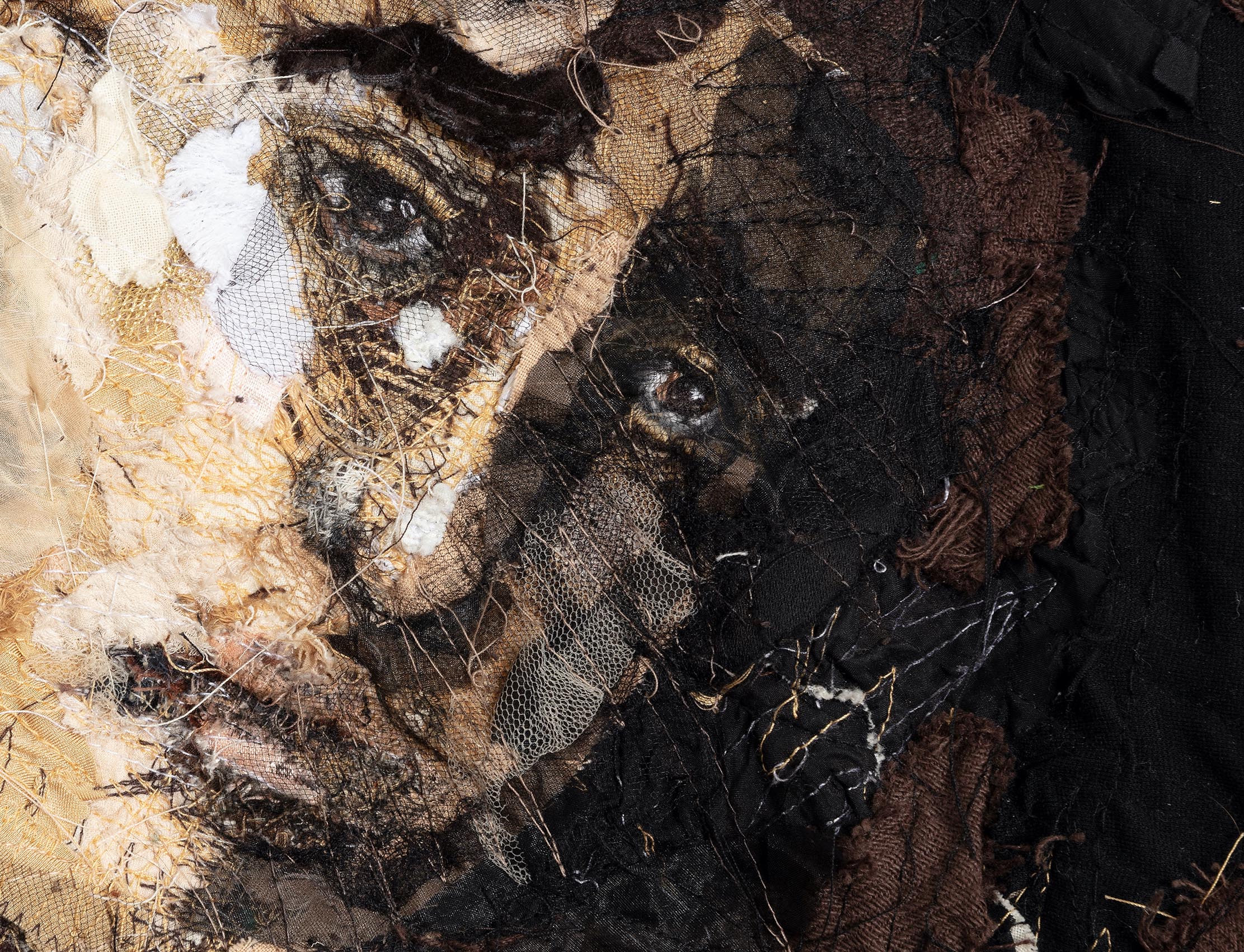
What’s a typical day like in your studio?
My dog Tabitha wakes me early every morning and we get a coffee and go to the park to see her friends. It’s useful for me to take this time to be out in the world to collect myself before I descend into my studio chaos.
I usually have several works going at once, from big, finalised tapestries that need to be hand-sewn together, to early sketches of works to come. I try and bounce between these different stages each day to keep my eyes and ideas fresh.
In the early stages I like to work in silence, so I can focus entirely on the work and feel iterative. Once the composition is finalised and the process becomes a meditative action of sewing things down, I tend to get engrossed in an audiobook or the entire archive of this American life. (big ups to Ira Glass, unspoken studio muse)
Who are your favorite artists?
Louise Bourgeois, Wangechi Mutu, Tschabalala Self, Kiki Smith, Ann Hamilton, Khadim Ali, Hannah Gartside.
Where do you go to discover new artists?
I see a lot of international work on Instgram. I try and go to a lot of shows in Sydney, it’s nice to know what people are making locally.
Learn more about the artist by visiting the following links:
